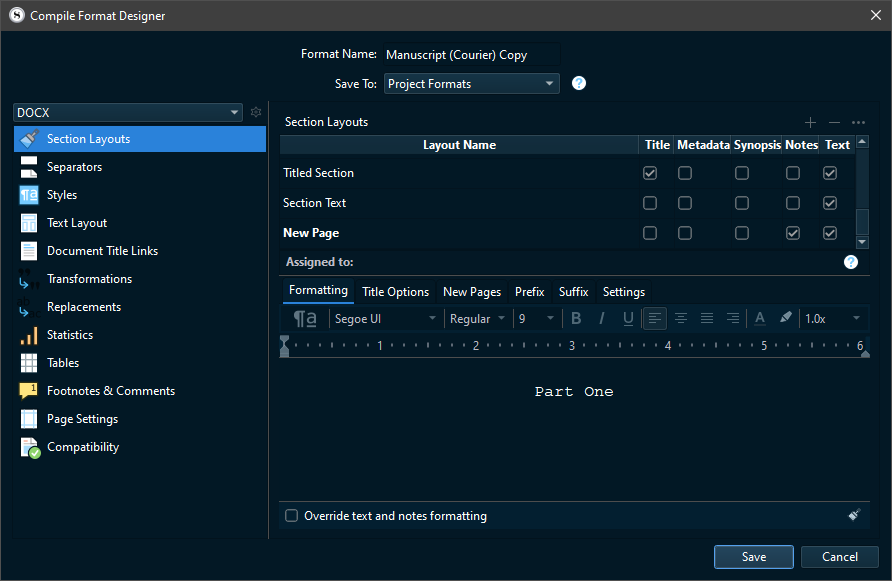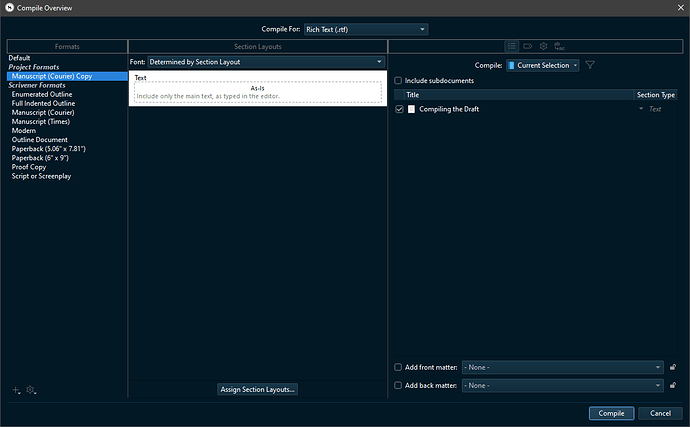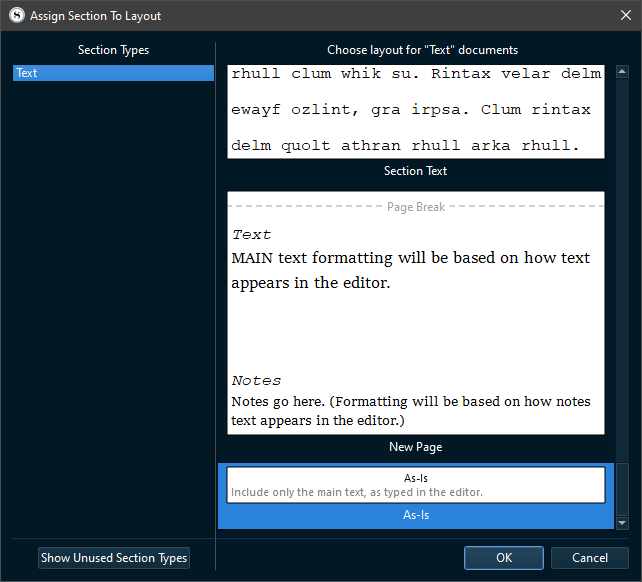Great news!  Very glad that you got it sorted.
Very glad that you got it sorted.
To be fair, Assigning Section Layouts, as well as the equally important Section Types, figures prominently throughout Scrivener’s documentation of the compile feature.
The User Manual discusses the purpose of Section Layouts and how to assign them in the third section (23.3) of the compile chapter. Section Layouts are referred to as a “major component” of compile.
The Interactive Tutorial’s discussion of Compile is much briefer and delves into very little detail, but specifically takes the time to walk through how to Assign Section Layouts. See the documents names Section Types, as well as Compiling the Draft, within the Getting It Out There folder.
Finally, the Compile section in L&L’s Scrivener 3 Upgrade Guide , which is specifically targeted toward folks who need to “unlearn” Scriv 1 compile, explicitly discusses the differences between the Scriv 1 vs. Scriv 3 compile. Section Layouts and Section Types are mentioned early and often. The upgrade guide includes a worked example where you walk through each step of using the new compiler, including Assigning Section Layouts.
This probably seems like I’m hitting you over the head with documentation and I apologize for that, but I’m trying point out that the info is there if you need it. Of all the features of Scrivener, Compile is the one that lends itself least to quick answers if you don’t understand how the fundamental plumbing works, which makes it the feature that would yield the highest return if you invested the time to, for example, read the Upgrade Guide and go through the worked example.
Here’s a summary of the fundamental plumbing, discussed in more detail in the documentation referenced above.
Binder Item > Section Type > Section Layout > Compile settings
This means:
Binder Items (documents & folders) have a Section Type, which defines what you consider that item to be in your project. For example, Text or Heading or Scene.
Section Types can be assigned to Section Layouts in the main compile panel.
Section Layouts are part of the Compile Format, and are where you tell Scrivener what pieces of info to include in compile and how to format them. For example, one of these pieces of info is Notes.
Just trying to save you potential future frustration and headbanging against the Great Wall of Compile. 
By the way, there are a few reasons you probably missed the importance of Assigning Section Layouts:
- Compile still works without it, but you lose control of formatting in certain areas.
- If you are working with a project converted from Scrivener 1, the conversion process may have done some assignments for you.
- If you are working with a project created from a Scrivener 3 template, Scrivener automatically assigns Section Types and Section Layouts, and the defaults might have been sufficient for you.
I’ll conclude this lengthy post now and get on with my morning. Sorry for the lecture!  Again, I’m glad you were able to figure out getting Notes added.
Again, I’m glad you were able to figure out getting Notes added.
Best,
Jim



